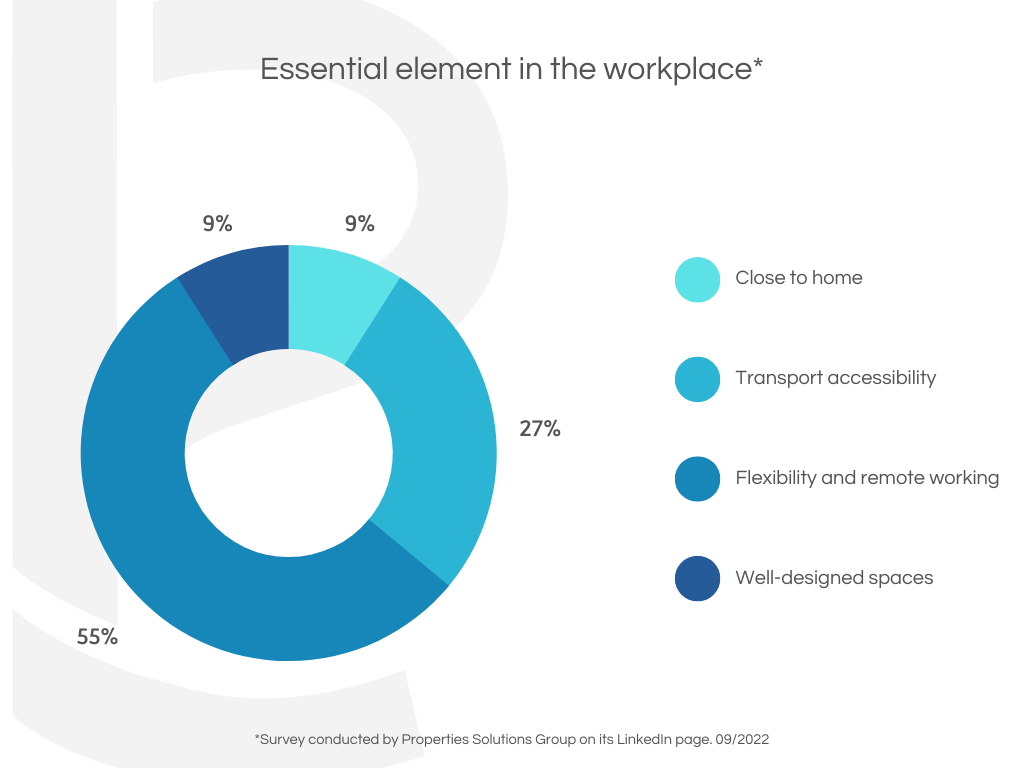The office life is being reorganized – since the global pandemic – and is impacted by remote working. In an uncertain context, flexibile workspace remain the best method to maintain productivity, well-being, profitability, and environmental objectives.
In our new article, learn more about office flexibility and, who knows, you might just take the plunge after reading it… Let us convince you (if you are not already)! 😉
-
A new way of organizing your work environment
More and more companies are looking for the best way to organize their office space.
You have several options: such as partitioning – which was trending in the 80s – or open space – popularized in the 90s. Flexibility is the new trend, the today’s trend.
The aim of flexibility is to increase office spaces and attract new talents – thanks to this evolving work environment – at the same time.
You have plenty of different possibilities with a flexible organization: fixed offices, mobile offices, remote working, working in a third place – namely a coworking space – etc. Your organization choices are not frozen, and you may as well combine different options: it will offer the employee freedom and a real sense of responsibility.
Even for a “traditional office”, flexibility is just around the corner. The space can be quickly and efficiently modulated by moving a few elements. The number of desks can change to suit your company’s needs or growth through the time. Everything related to the work environment should be flexible nowadays.
-
Main advantages of using flexibility in your workspace
Flexible offices are a revolution in the world of office real estate. This new way of thinking your work environment fit everyone’s needs and can be adapted to each person.
If you chose this work organization, you will:
- Optimize your real estate costs: instead of renting vacant offices, you can adapt to your current needs – taking into account remote working, business trips, leaves and other employee’s absences.
- Increase your employees’ mobility, productivity, and well-being: they can work everywhere and at every moment, even when they are on a business trip – by using a coworking space when they are out of town, for instance. Adapting the spaces according to their needs will lead to better results and considerable time savings. Flexible office spaces offer qualitative and pleasant atmosphere.
- Embrace remote working – which is an integral part of the flexibility organization – as working from home allows freeing up some space. It also improves your employees’ living standards – for those who want to work remotely.
- Ease your recruitment campaigns: the new generation of workers are challenging and place their living standards as one of their priorities: offering flexibility in the work organization will appeal to them.
-
Flexibility rhymes with sustainability
There was a before and an after global pandemic in our minds, way of thinking, and habits. Well-being and ecology are really ones of our priorities nowadays.
There has been a huge awareness which lead to a new prioritization of our daily life’s elements. Well-being and ecology have become extremely important for most people – which was not necessarily the case in the past.
Since we spend most of our time working, reducing the environmental impact of buildings is crucial. With flexible office spaces, it is possible and important.
Less space also means less energy for heating or air conditioning and fewer resources to equip the offices. Moreover, daily commuting is limited by remote working. All these factors help to reduce the company’s carbon footprint.
We can go further with simple change in our habits:
- Remote working 2 or 3 times a week.
- Opt for car sharing or public transports when possible.
- Reduce paper wastage: duplex printers, be “all digital”, etc.
- Turn your devices off every day.
- Adapt your lighting, heating, and conditioning systems.
Flexibility in your workspace is not only a good idea, it also becomes necessary today. To reduce structural costs – by limiting the amount of m² required – and your company’s environmental footprint – by applying the tips we gave you in this article, among others.
Several studies support the fact that it is time to stop buying or renting space without thinking about its optimization. On average, 30% of offices are vacant worldwide, and meeting rooms are only used 44% of the time. This space can and need to be optimized.





